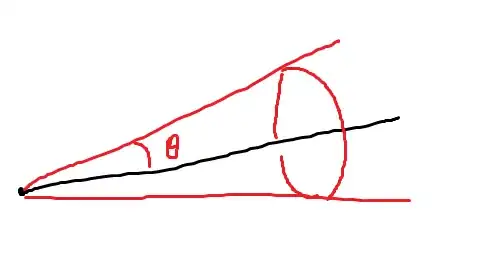
My question is pretty much the same as this question below, however I came up with a potential solution to this problem that I didn't see an answer to in the other question and I was wondering if it is a viable answer.
Generate a random direction within a cone
If you didn't open the link, basically you have a cone oriented along the black line and I want to generate a uniformly sampled vector within the cone.
I was thinking I could do the following:
1) Normalize the axis of the cone (black line) and call it N
2) Generate a uniformly distributed vector R within the hemisphere centered around N using this code: http://pathtracing.wordpress.com/2011/03/03/cosine-weighted-hemisphere/ Note: Not sure if cosine-weighted or unweighted sampling would be better
3) Check to see if the angle between N and R is less than the cone's theta
4) If it's less, we're done and we have our angle. If not, go back to step 2 and repeat.
Also, I would like to calculate the PDF of this conal distribution. According to a lecture slide of a class I once took a while back, the probability of choosing any given direction within the cone is as follows:
$p = \frac {1}{2\pi(1 - \cos\theta)}$
I was wondering if this probability is 1) accurate and 2) still holds true with my potential method above.